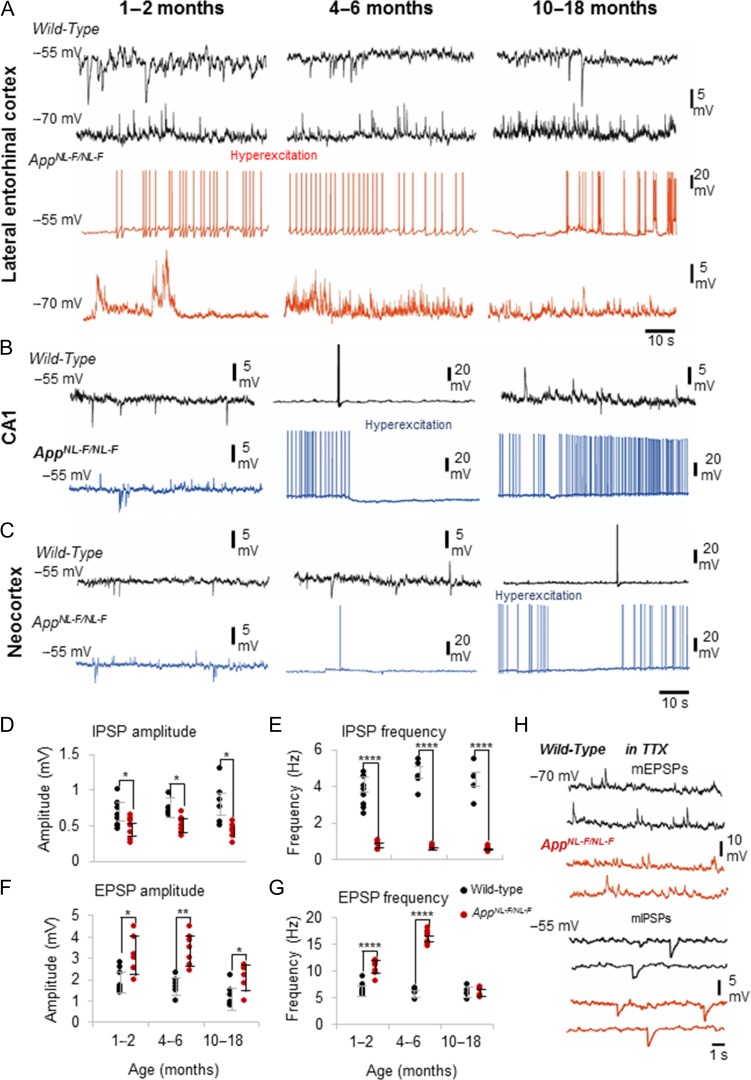Figure 3.
Persistent synaptic hyperexcitation and diminished inhibition at principal pyramidal cells in AppNL-F/NL-F mouse model of AD. Intracellular recordings of spontaneous response of layer 2 LEC neurons recorded using whole-cell patch clamp electrodes at membrane potentials held at −55 and −70 mV (in current clamp). (A) Recordings from wild-type mice at 1–2 months, 4–6 months, and 10–18 months at −70 and −55 mV. Similar recordings from age-matched AppNL-F/NL-F mice are shown in red. The principal, pyramidal cells recorded in wild-type mice showed less spontaneous firing and subthreshold oscillation compared with AppNL-F/NL-F mice when held at firing threshold of −55 mV. Furthermore, the wild-type mice showed inward inhibitory current events as expected at all ages investigated. By contrast, similar neurons recorded in AD mice resulted in oscillation between subthreshold and spontaneous action potential discharge at firing threshold of −55 mV, which was seen to diminish from 10 months onwards. These results suggest impaired spontaneous excitation and inhibition and an increasing state of hyperexcitability upon AD progression until 10–18 months. Scale bars on the right refer to all 3 data sets. (B and C) Similar events recorded from pyramidal cells in CA1 and in the layer 2/3 of the neocortex (somatosensory region) in wild-type (black traces) and age-matched AppNL-F/NL-F mice (blue traces). Hyperexcitation was not apparent in these excitatory cells in the AppNL-F/NL-F younger mice cohorts in CA1 or neocortex, as this developed later in contrast to the LEC. (D and E), sIPSP amplitudes and frequency recorded at −55 mV in wild-type and age-matched AppNL-F/NL-F mice. (F and G) sEPSP amplitudes and frequency recorded at −70 mV in wild-type and age-matched AppNL-F/NL-F mice. sEPSP amplitude and frequency were significantly higher in the AppNL-F/NL-F mouse model until 10–18 months, and correlated with a significantly reduced amplitude and frequency of sIPSPs received by pyramidal cells in the AppNL-F/NL-F mouse model (*P < 0.05; **P < 0.01, ***P < 0.001, ****P < 0.0001, n = 7 animals per cohort). (H) Synaptic events recorded in the presence of TTX, illustrating example traces of miniature, mEPSPs and mIPSPs in wild-type and age matched AppNL-F/NL-F mice.

